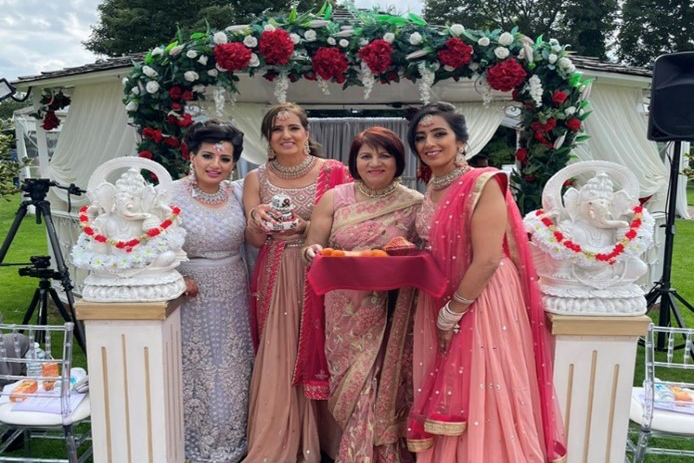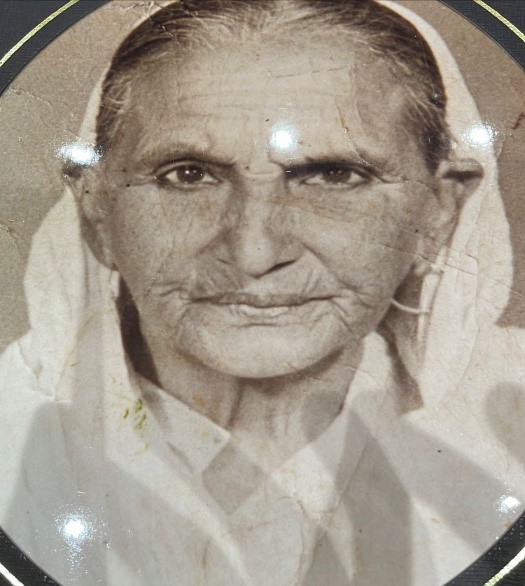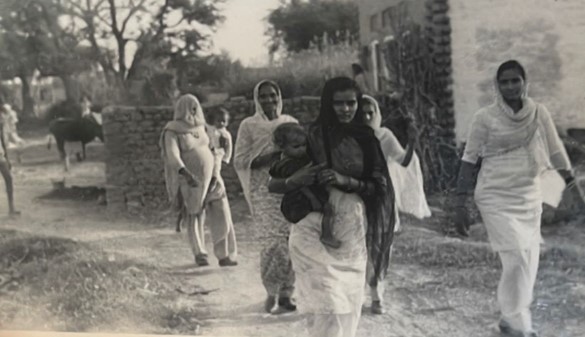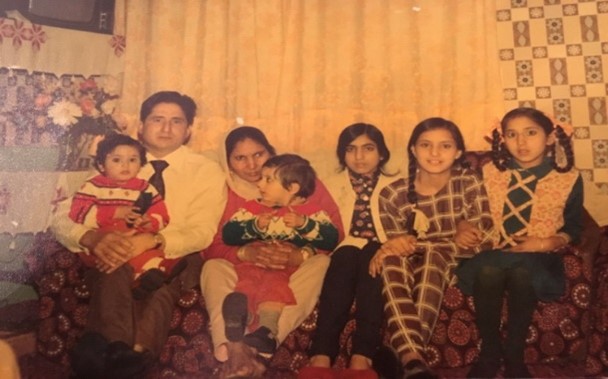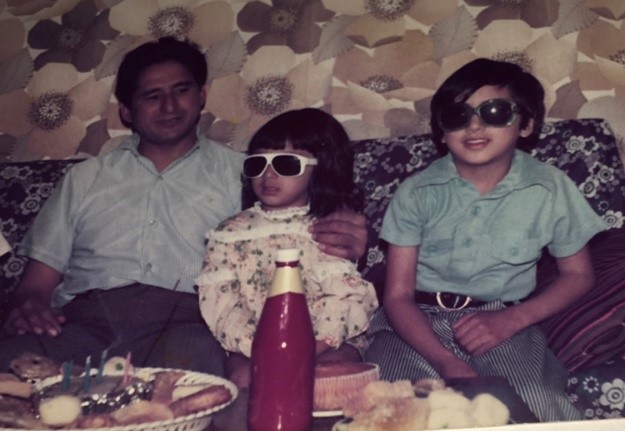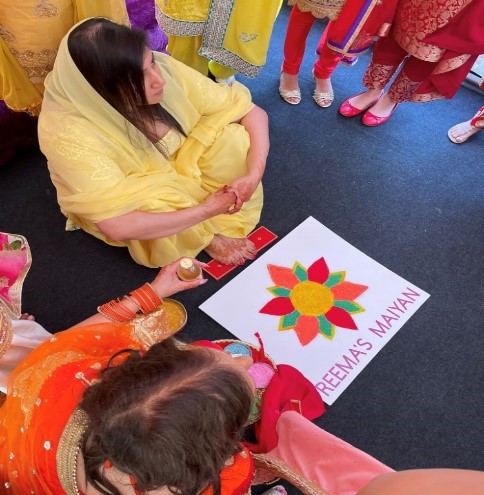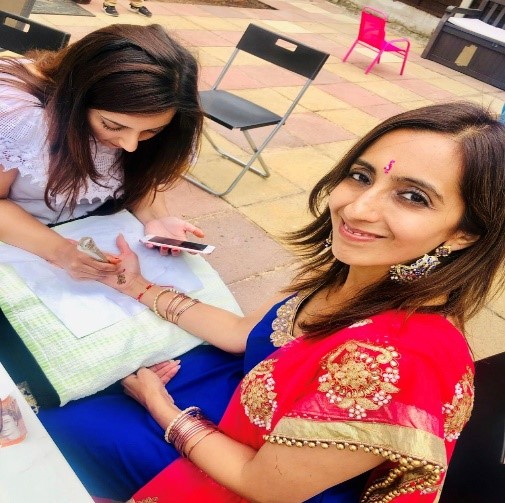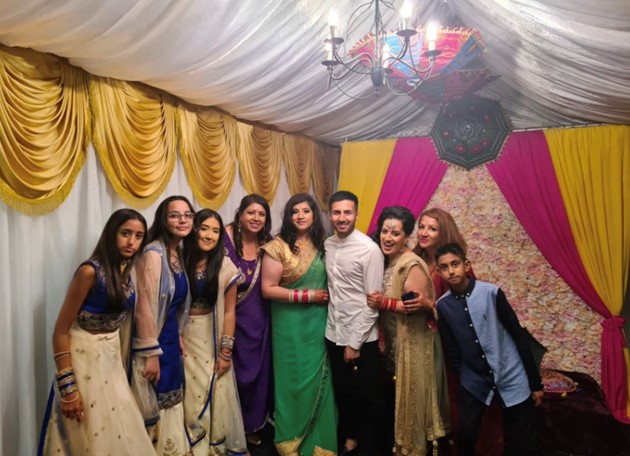This blog post forms part of a series exploring identity, culture and heritage as part of the University of Kent’s South Asian Heritage Week.
By Vanisha Jassal, Senior Lecturer, School of Social Policy, Sociology and Social Research
The early days
My Indian grandma, Chinti Suman, had seven children, one daughter and six boys. My dad, Amar Chand Mahay was second from youngest. She was forced to flee her home during the 1947 partition of India as it was now deemed to be located in the new nation of Pakistan. My dad was 13 at the time – the age of my son now which feels terribly poignant. I can only imagine the trauma she and my grandad had experienced as they walked days on end with their young family of seven, having to start a new life in a new village miles away. My dad would recount many years later to me and my siblings, how they never ate for days on end.
My paternal grandma.
An image from the 1950s of my father’s ‘new’ village in India, Ghurka.
In the 1950s, my grandma’s eldest son (far right) moved to the UK. I do not know what she felt about this; whether she wanted this move for him or whether she wanted him to stay but this was the first major wave of migration from India to the UK – many seeking greater economic stability and prosperity. My uncle settled in the city of Wolverhampton and then invited my dad and the youngest of the sibling group, my youngest uncle (centre), to join him which they did. They lived together for a few years, supporting each other against the challenges of migration – adapting to a completely new life without the strong family support structures they had had back in India. However, they did amazingly well and remained close to each other throughout their lives. My youngest uncle is the only remaining survivor of the sibling group today. He turned 80 this year.
My father (far left) and his two brothers who migrated to the UK and settled in the city of Wolverhampton in the 1960s.
When my dad had migrated to the UK in the 1960s, he left behind my mother and four of his young children (my brother and three sisters). This must have been difficult, especially for my mother as the children were all aged below 11; although she had a large extended family who supported her. My elder siblings often spoke about how they were so close to their cousins growing up, all living in one huge house and all the men and women doing their share of household chores. This is so far removed from my own nuclear family and although I still retain close links with my extended family, I feel that it would never quite replicate what they had experienced in India.
In 1970 my mum and siblings migrated to the UK to join my dad. As young teenagers, they had to learn to adapt to a completely new culture. Like thousands of other migrating parents, my mother and father sought to ensure that their children retained their culture whilst embracing the opportunities their new life was providing.
My parents and my siblings – apart from my eldest brother who took the photo, and me as I was not yet born.
Maintaining cultural values and traditions
In the 1970s, my mum and dad decided to extend their family by having three more children. My two brothers and me, the youngest. Large families were quite the norm amongst migrating families from India and I sometimes think whether adults were trying to re-create the strong sense of family and community that they had back in India. I enjoy coming from a large family myself and experienced a busy and fun packed childhood, and today have a huge network of cousins. My husband and myself, however, due to a very different existence from my parents and I suppose, conforming to a more Western sense of family, decided that two children were more than enough! My daughter often feels quite disgruntled by this, thinking that she may not have quite a wide social network as mine when she grows up; at which point I tell her that she had better get on with her brother then!
Me with my dad and one of my brothers celebrating a birthday (glad my taste in sunglasses improved!)
What I think is wonderful and quite amazing is that subsequent generations following those who had migrated in the 1950s and 1960s, are still continuing the traditions which their grandparents and great grandparents had followed. At weddings for instance, there are a plethora of rites and rituals which we all follow – even my children – because it is a part of our roots and our culture. What can be frustrating for my children, Henna and Raam, third generation Indians, is that we cannot always explain what they mean! There is a serious business opportunity around this – creating a manual of all the traditions, and explanations around the origins of their meaning.
My niece in 2021 at her ‘maiyan’ ceremony, the day before her wedding day.
Me applying Mehndhi (Henna) at my cousin’s wedding in 2019.
Contemporary traditional experiences
Although my children and nieces and nephews are fully immersed in British culture, much more than I and my siblings were, they are still very engaged in and feel the need to preserve their Indian heritage. For one, they love dressing up for any close family wedding which involves an opportunity to splash out on extravagant Indian clothing and jewellery as shown here. They are fortunate to be able to pick and choose from two cultures, each which they claim as their own and which indeed are theirs to own, completely.
My daughter Henna (right) and niece Sarin my eldest niece Reema’s wedding in 2021
Me (far right) and from left to right, my niece, sister and and sister-in-law at a family wedding. Indian weddings are known for their grandeur, colour, food and music. They are often described as a week of partying. As well as the younger generation, the adults equally like the opportunity to dress up!
The young Indian generation enjoying their heritage.
This blog post forms part of a series exploring identity, culture and heritage as part of the University of Kent’s South Asian Heritage Week. This week runs from the 28 March -1 April 2022 and invites exploration of the identities, history and heritage of British South Asians.
For more events and activities please see Kent Union’s South Asian Heritage Week website.
